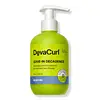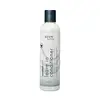What's inside
What's inside
 Key Ingredients
Key Ingredients

 Benefits
Benefits

 Concerns
Concerns

 Ingredients Side-by-side
Ingredients Side-by-side

Water
Skin ConditioningCetyl Esters
EmollientAloe Barbadensis Leaf Juice
Skin ConditioningGlycerin
HumectantBehentrimonium Chloride
PreservativeCetyl Alcohol
EmollientStearyl Alcohol
EmollientCaprylic/Capric Triglyceride
MaskingPersea Gratissima Oil
Skin ConditioningCitric Acid
BufferingEthylhexylglycerin
Skin ConditioningGuar Hydroxypropyltrimonium Chloride
Skin ConditioningIsopropyl Myristate
EmollientPanthenol
Skin ConditioningPolyquaternium-37
Polyquaternium-39
PPG-1 Trideceth-6
Skin ConditioningPropylene Glycol Dicaprylate/Dicaprate
EmollientSodium PCA
HumectantSorbitol
HumectantTocopherol
AntioxidantPhenoxyethanol
PreservativePotassium Sorbate
PreservativeSodium Benzoate
MaskingParfum
MaskingAlcohol
AntimicrobialAlpha-Isomethyl Ionone
PerfumingBenzyl Benzoate
AntimicrobialBenzyl Salicylate
PerfumingCitronellol
PerfumingGeraniol
PerfumingLimonene
PerfumingLinalool
PerfumingWater, Cetyl Esters, Aloe Barbadensis Leaf Juice, Glycerin, Behentrimonium Chloride, Cetyl Alcohol, Stearyl Alcohol, Caprylic/Capric Triglyceride, Persea Gratissima Oil, Citric Acid, Ethylhexylglycerin, Guar Hydroxypropyltrimonium Chloride, Isopropyl Myristate, Panthenol, Polyquaternium-37, Polyquaternium-39, PPG-1 Trideceth-6, Propylene Glycol Dicaprylate/Dicaprate, Sodium PCA, Sorbitol, Tocopherol, Phenoxyethanol, Potassium Sorbate, Sodium Benzoate, Parfum, Alcohol, Alpha-Isomethyl Ionone, Benzyl Benzoate, Benzyl Salicylate, Citronellol, Geraniol, Limonene, Linalool
Water
Skin ConditioningAloe Barbadensis Leaf Juice
Skin ConditioningCocos Nucifera Oil
MaskingSimmondsia Chinensis Seed Oil
EmollientCarthamus Tinctorius Seed Oil
MaskingPersea Gratissima Oil
Skin ConditioningPolyquaternium-37
Tocopheryl Acetate
AntioxidantPropylene Glycol Dicaprylate/Dicaprate
EmollientPEG-50 Shea Butter
EmulsifyingGlycerin
HumectantCetrimonium Chloride
AntimicrobialHydrolyzed Keratin
HumectantPanthenyl Hydroxypropyl Steardimonium Chloride
Sodium PCA
HumectantPolyquaternium-7
Parfum
MaskingPPG-1 Trideceth-6
Skin ConditioningDehydroacetic Acid
PreservativeBenzyl Alcohol
PerfumingWater, Aloe Barbadensis Leaf Juice, Cocos Nucifera Oil, Simmondsia Chinensis Seed Oil, Carthamus Tinctorius Seed Oil, Persea Gratissima Oil, Polyquaternium-37, Tocopheryl Acetate, Propylene Glycol Dicaprylate/Dicaprate, PEG-50 Shea Butter, Glycerin, Cetrimonium Chloride, Hydrolyzed Keratin, Panthenyl Hydroxypropyl Steardimonium Chloride, Sodium PCA, Polyquaternium-7, Parfum, PPG-1 Trideceth-6, Dehydroacetic Acid, Benzyl Alcohol
Ingredients Explained
These ingredients are found in both products.
Ingredients higher up in an ingredient list are typically present in a larger amount.
Aloe Barbadensis Leaf Juice comes from leaves of the aloe plant. Aloe Barbadensis Leaf Juice is best known for helping to soothe sunburns. It is also anti-inflammatory, moisturizing, antiseptic, and can help heal wounds.
Aloe is packed with good stuff including Vitamins A, C, and E. These vitamins are antioxidants, which help fight free-radicals and the damage they may cause. Free-radicals are molecules that may damage your skin cells, such as pollution.
Aloe Barbadensis Leaf Juice also contains sugars. These sugars come in the form of monosaccharides and polysaccharides, folic acid, and choline. These sugars are able to help bind moisture to skin.
It also contains minerals such as calcium, 12 anthraquinones, fatty acids, amino acids, and Vitamin B12.
Learn more about Aloe Barbadensis Leaf JuiceGlycerin is already naturally found in your skin. It helps moisturize and protect your skin.
A study from 2016 found glycerin to be more effective as a humectant than AHAs and hyaluronic acid.
As a humectant, it helps the skin stay hydrated by pulling moisture to your skin. The low molecular weight of glycerin allows it to pull moisture into the deeper layers of your skin.
Hydrated skin improves your skin barrier; Your skin barrier helps protect against irritants and bacteria.
Glycerin has also been found to have antimicrobial and antiviral properties. Due to these properties, glycerin is often used in wound and burn treatments.
In cosmetics, glycerin is usually derived from plants such as soybean or palm. However, it can also be sourced from animals, such as tallow or animal fat.
This ingredient is organic, colorless, odorless, and non-toxic.
Glycerin is the name for this ingredient in American English. British English uses Glycerol/Glycerine.
Learn more about GlycerinParfum is a catch-all term for an ingredient or more that is used to give a scent to products.
Also called "fragrance", this ingredient can be a blend of hundreds of chemicals or plant oils. This means every product with "fragrance" or "parfum" in the ingredients list is a different mixture.
For instance, Habanolide is a proprietary trade name for a specific aroma chemical. When used as a fragrance ingredient in cosmetics, most aroma chemicals fall under the broad labeling category of “FRAGRANCE” or “PARFUM” according to EU and US regulations.
The term 'parfum' or 'fragrance' is not regulated in many countries. In many cases, it is up to the brand to define this term.
For instance, many brands choose to label themselves as "fragrance-free" because they are not using synthetic fragrances. However, their products may still contain ingredients such as essential oils that are considered a fragrance by INCI standards.
One example is Calendula flower extract. Calendula is an essential oil that still imparts a scent or 'fragrance'.
Depending on the blend, the ingredients in the mixture can cause allergies and sensitivities on the skin. Some ingredients that are known EU allergens include linalool and citronellol.
Parfum can also be used to mask or cover an unpleasant scent.
The bottom line is: not all fragrances/parfum/ingredients are created equally. If you are worried about fragrances, we recommend taking a closer look at an ingredient. And of course, we always recommend speaking with a professional.
Learn more about ParfumPersea Gratissima Oil is also known as avocado oil.
Avocado Oil has antioxidant properties. It is mostly made up of the glycerides of fatty acids. About 67% of these fatty acids is made up of oleic acid. Palmitic acid and linoleic acid are also present.
These fatty acids help hydrate and soften the skin. It may increase collagen content in the skin. Collagen helps keep your skin plump and firm. This ingredient helps reduce inflammation and has not shown to clog pores.
This ingredient may not be fungal-acne safe due to its high fatty acid content.
Avocados also have B vitamins, vitamin K, vitamin C, vitamin E, and potassium.
Learn more about Persea Gratissima OilWe don't have a description for Polyquaternium-37 yet.
We don't have a description for PPG-1 Trideceth-6 yet.
Propylene Glycol Dicaprylate/Dicaprate is a mixture of Propylene Glycol Dicaprylate and Propylene Glycol Dicaprate.
It is an emollient and helps hydate the skin.
Sodium PCA is the sodium salt of pyroglutamic acid. It is naturally occurring in our skin's natural moisturizing factors where it works to maintain hydration.
The PCA stands for pyrrolidone carboxylic acid, a natural amino acid derivative.
This ingredient has skin conditioning, anti-inflammatory, and humectant properties. Humectants help hydrate your skin by drawing moisture from the air. This helps keep your skin moisturized.
Learn more about Sodium PCAWater. It's the most common cosmetic ingredient of all. You'll usually see it at the top of ingredient lists, meaning that it makes up the largest part of the product.
So why is it so popular? Water most often acts as a solvent - this means that it helps dissolve other ingredients into the formulation.
You'll also recognize water as that liquid we all need to stay alive. If you see this, drink a glass of water. Stay hydrated!
Learn more about Water